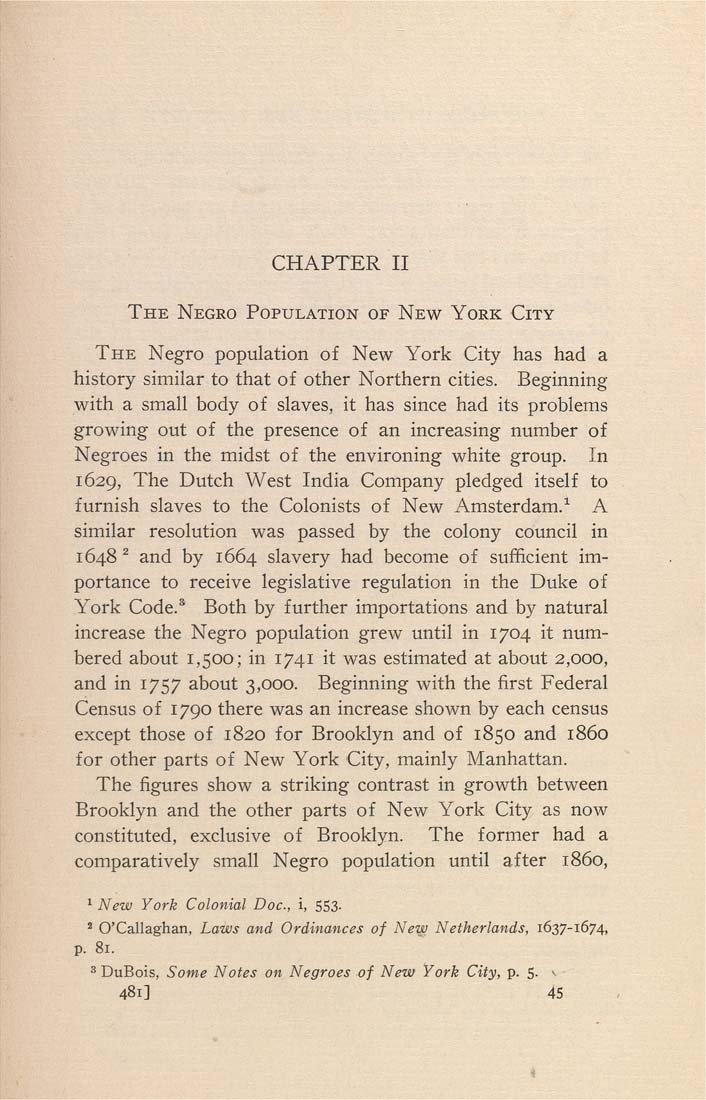CHAPTER II
The Negro Population of New York City
The Negro population of New York City has had a
history similar to that of other Northern cities. Beginning
with a small body of slaves, it has since had its problems
growing out of the presence of an increasing number of
Negroes in the midst of the environing white group. In
1629, The Dutch West India Company pledged itself to
furnish slaves to the Colonists of New Amsterdam.^ A
similar resolution was passed by the colony council in
1648 ^ and by 1664 slavery had become of sufficient im¬
portance to receive legislative regulation in the Duke of
York Code.® Both by further importations and by natural
increase the Negro population grew until in 1704 it num¬
bered about 1,500; in 1741 it was estimated at about 2,000,
and in 1757 about 3,000. Beginning with the first Federal
Census of 1790 there was an increase shown by each census
except those of 1820 for Brooklyn and of 1850 and i860
for other parts of New York City, mainly Manhattan.
The figures show a striking contrast in growth between
Brooklyn and the other parts of New York City as now
constituted, exclusive of Brooklyn. The former had a
comparatively small Negro population until after i860,
1 New York Colonial Doc, i, 553.
^ O'Callaghan, Laws and Ordinances of New Netherlands, 1637-1674,
p. 81.
^ DuBois, Some Notes on Negroes of New York City, p. 5. v
481] 45
|








